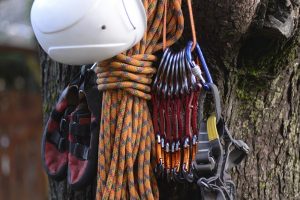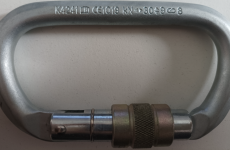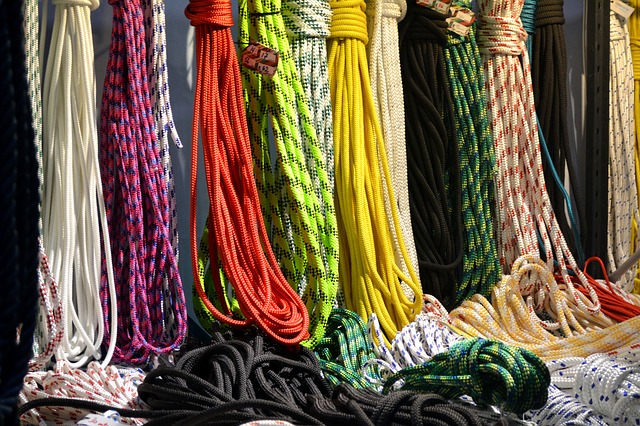
For adrenaline, fun, and fitness, rock climbing is always the perfect activity. With proper instruction and equipment, any moderately fit person can enjoy a rock climbing adventure. Many people are scared away from rock climbing by its reputation as being dangerous, and by the fear of heights.
If you are a beginner, figuring out the right set of climbing gear might be cumbersome. There are hundreds of choices of climbing shoes, harnesses, carabiners, etc. Some are designed for the advanced climber while others are specifically designed for beginners. Because we know you are new, we have written a comprehensive guide for all the equipment you will need to get started rock climbing.
This article has been written for climbers who want to engage in outdoor climbing but are held back by the lack of a comprehensive gear list. While you will get all the necessary gear when you climb with a guide, you will eventually need to have your own gear. The advantage that buying your own gear gives you is that you will be fully aware of its history.
You will also know how to carry out maintenance on each of the items on your list. Be aware that frequent use will eventually lead to the wear and tear of your gear. Therefore, it is a good idea to always check your equipment before you go out climbing.
Climbing Harness
If you are bouldering, you may not need a climbing harness. But if you intend to do activities like rock climbing, etc, you will need a climbing harness. The harness will allow you to tie your climbing rope safely and efficiently. The rope can be threaded and tied to the harness with a front tie-in point. There is also a dedicated belay loop, which is quite different from the tie-in. The belay loop as well as the tie-in point is needed for you to buckle your harness correctly, something that is essential for safety.
Any kind of clothing you plan on putting on when climbing has to come under the harness. If you want to engage in trad climbing, you may need a heavy-duty harness with lots of loops to carry all your gear. Make sure you understand the kind of climbing you want to do before selecting your harness.
There are many types of harness and the kind of climbing you are doing will determine the kind of harness you choose.
Every harness comes with two parts:
- Waistbelt: the waistbelt should sit over your hips and you must make sure it fits snugly.
- Leg Loops: Each leg will be covered by one loop. Most harnesses come with removable or adjustable harness for quick replacement and modification.
Climbing Shoes
The most important component of your gear list is your climbing shoe. Good footwork is important for rock climbing. You can develop that skill by consistently wearing a well fitting set of shoes.
Climbing shoes provide the friction you need to grip on footholds while at the same time protecting your feet. For you to choose the right fit, you have to consider your climbing activities and the area you want to do your climbing.
If you are rock climbing, you should choose shoes that can fit snugly but are not too tight. If you know your climbing will be heavy, you can choose a closer-fitting shoe. In addition, if you are going rock climbing, make sure the base of your climbing area is not far from where you stop your car. This is because rock-climbing shoes are not comfortable for walking long distances.
Climbing Ropes
After the climbing shoe, the next in line is the climbing rope. This is your lifeline, and without one, you can’t hope to engage in a successful climbing.
Climbing ropes are a very specialized type of gear and only your climbing situation as well as the type of climbing you are doing will determine which one you go for. The basic ones are dynamic ropes, that have elasticity weaved into them, and static ropes, that do not have elasticity.
Belay Device
Belay devices are normally used to secure your climbing progress by controlling the rope. With proper usage, you can use them to lower yourself or catch yourself from a fall. There are several styles of belay devices and your situation will determine which one is appropriate. The popular ones are self-braking, figure-8, and tubular style.
Climbing Helmet
There are helmets made specifically for climbing, and it is always a good idea to wear one when you are climbing outdoors. They are made with hard shells with a comfortable padding, internal element and a strapping system that comprises a chinstrap, headband, and the harness.
Rock climbing helmets provide protection for the head in the event of falling. They also protect the head from falling debris and rocks. In a controlled environment like the gym, helmets might not be essential. This should not prevent you from using one when you are out there climbing on your own.
The helmet should be comfortable. It should not be too tight, but fit snugly on your head. To make sure you are assured of protection of your head from side impact, your harness should pass the CE (European Committee for Standardization) test.
Carabiners
Carabiners are strong, light metal rings that are used to connect the climbing rope to a piece of climbing aid and protective devices. You can also use a carabiner to attach your gear to its slings and you may need a dozen of these in most climbing situations.
These usually come in one of several basic shapes as follows:
- D-shape: carabiners made in this shape are the strongest as they are made to withstand more outward force than the others.
- Asymmetrical D-shape: the carabiners in this shape come with one solid side and another small side. The small side receives lesser weight and the solid side receives higher in most cases.
- Oval: this is the best shape of a carabiner because it can be used for just about any climbing situation.
There are also several different carabiner gate styles such as wire, locking, bent, and straight. Each of these are used for protection and adjusting your carabiner.
Climbing Protection
Climbing protection is used to secure the climbing rope to the rock in traditional climbing. This can help you prevent inadvertently falling long distances. However, you have to make sure your climbing protection is properly fitted into a crack or hole. You also have to learn how to set anchors and use protection extras such as chocks, nuts, and coms, which are going to help a lot in terms of protection.
Conclusion
There you have it. You can slowly obtain each item one at a time, and eventually you will have more than enough gear. It is also a good idea to order everything at once through Amazon and take advantages of discounts.


